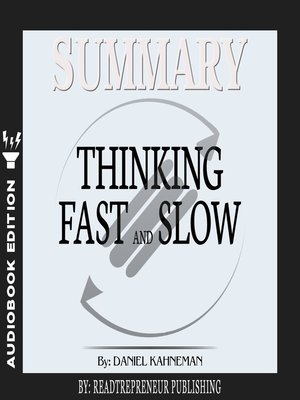

Understanding the differences between these two systems can help us become more aware of how we make decisions and when we need to use more deliberate thinking. However, because System 2 thinking requires more effort, we tend to rely on System 1 thinking by default, even when it may not be the most accurate or effective method. System 1 thinking can often lead to intuitive judgments that are quick but also prone to error, while System 2 thinking can help us catch and correct those errors.

Examples of System 2 thinking include solving math problems, planning a trip, or writing an essay.Īlthough these two systems operate independently of each other, they can also interact and influence our decisions in various ways. It requires conscious effort and mental energy, and is used to solve complex problems or make decisions in novel situations. On the other hand, System 2’s thinking is slow, deliberate, and analytical. Examples of System 1 thinking include recognizing faces, interpreting tone of voice, and driving on familiar roads. It operates unconsciously, and allows us to quickly and effortlessly make decisions based on past experiences and patterns. System 1 thinking is fast, intuitive, and automatic. Kahneman proposes that our thinking can be divided into two distinct systems: System 1 and System 2. In this article, we will provide a summary of Kahneman’s key insights and takeaways from “Thinking, Fast and Slow”. By understanding the ways in which our brains process information and make decisions, we can become more aware of our own biases and improve our ability to make sound judgments. The topic of decision making and cognitive biases is particularly important in today’s world, where we are constantly faced with complex and consequential decisions that require careful consideration. In the book, Kahneman explores the two systems of thinking that drive our judgments and choices, and delves into the numerous cognitive biases and heuristics that influence our decisions. “Thinking, Fast and Slow” is a book written by Daniel Kahneman, a Nobel Prize-winning psychologist who has spent decades studying human decision making.


 0 kommentar(er)
0 kommentar(er)
